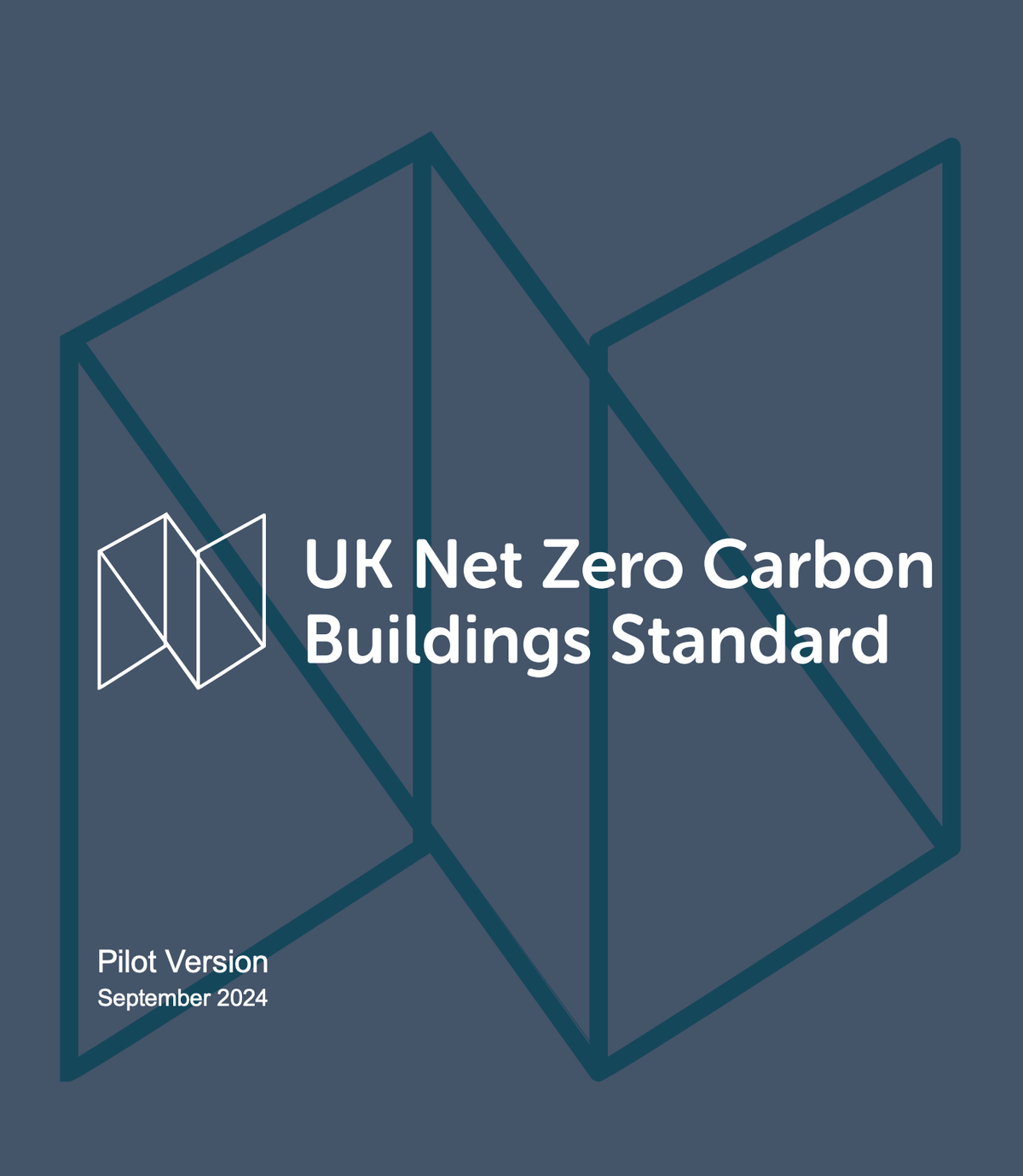Game Changer For Buildings Standards

The UK Net Zero Carbon Buildings Standard's pilot report introduces key benchmarks for retrofit strategies, with a focus on addressing existing building stock and aligning retrofit projects with carbon reduction goals. As a report with a wide range of contributors from organisations including the Better Buildings Partnership (BBP) Building Research Establishment (BRE) The Carbon Trust Chartered Institution of Building Services Engineers (CIBSE) Institution of Structural Engineers (IStructE) LETI Royal Institute of British Architects (RIBA) Royal Institution of Chartered Surveyors (RICS) UK Green Building Council (UKGBC) it is a weighty but important document for the retrofit community.
"The UK Net Zero Carbon Buildings Standard is a free-to-access technical standard that will enable the built environment to robustly prove that built assets align with the UK’s carbon and energy budgets," - David Partridge, Chair of the Standard’s Governance Board.
This new standard, therefore, acts as a critical enabler for retrofit projects, requiring them to meet long-term benchmarks in both operational energy and embodied carbon.
A Retrofit-Oriented Framework
Retrofit has a critical role in the pathway to Net Zero, the report makes that clear. It offers two main pathways for existing buildings under retrofit works: the "One-Go Retrofit" and the "Stepped Retrofit" approaches. These strategies are foundational for projects starting from 2025 and onward, which require detailed planning to meet operational energy performance benchmarks by 2040.
As stated in the report, existing buildings must either:
- Meet the 'One-Go Retrofit' limit defined for the year the retrofit work commences, or
- Adopt the 'Stepped Retrofit' approach, where interim limits are set, and a Retrofit Plan must be provided. The plan, aligned with PAS 2035 (domestic) and PAS 2038 (non-domestic), outlines specific retrofit steps, life cycle carbon assessments, and operational energy performance projections.
The framework emphasises operational energy modelling, making it clear that performance modelling, rather than building regulations compliance, will be the metric used for energy calculations. This shift signals a departure from older retrofit benchmarks, pushing for more accurate, future-oriented assessments.
Retrofit Plan Requirements
In projects adopting the 'Stepped Retrofit' approach, a Retrofit Plan must be submitted. The plan must include:
- A detailed description of the retrofit steps to be taken, including works on building fabric and services.
- Operational energy performance calculations that predict compliance with 2040 targets and interim goals.
- A life cycle carbon assessment demonstrating that embodied carbon from the works meets upfront carbon limits.
This rigorous planning process and lifecycle assessment ensure that retrofitting does not solely focus on operational carbon but also addresses the embodied carbon in materials and construction processes. For refurbishments, this means working towards long-term carbon reductions while considering the full environmental impact of the retrofit process.
Key Benchmarks for Retrofit Works
Embodied Carbon and Lifecycle Assessment
The report introduces a critical new metric for embodied carbon in retrofit projects. Embodied carbon assessments now must consider all life cycle stages, including A0-A5 (upfront emissions), B1-B5 (use phase emissions), and C1-C4 (end of life), providing a comprehensive understanding of the carbon impact of retrofit projects.
Furthermore, upfront carbon limits have been established for retrofit works, which vary by building sector and must be met in any year the works are undertaken. Future versions of the standard will introduce stricter life cycle carbon limits (A-C), but for now, the focus is on upfront emissions.
Energy Use Intensity (EUI) Limits for Retrofits
Energy use intensity (EUI) targets are a vital aspect of the standard, especially for existing buildings undergoing retrofit works. These targets vary by sector and are stricter for more energy-intensive buildings such as data centres and healthcare facilities. The Stepped Retrofit pathway allows for incremental improvements but demands that buildings still meet the final 2040 energy targets. The One-Go Retrofit, on the other hand, demands full compliance with the latest benchmarks at the time the project commences.
For example, buildings retrofitted in 2040 under the "One-Go Retrofit" model must achieve significantly reduced energy use intensities across various sectors, with stringent reductions for commercial, residential, and educational buildings.
Impact on Existing Retrofit Standards
The UK's current PAS 2035 and PAS 2038 standards focus heavily on retrofit project management and technical specifications, but the UK Net Zero Carbon Buildings Standard introduces more advanced and binding requirements, particularly around operational energy and embodied carbon. The focus on operational modelling, rather than relying solely on building regulations, suggests a more accurate reflection of building performance post-retrofit.
Implications for Industry Professionals
For professionals involved in refurbishment and retrofit projects, the report highlights several areas that will directly impact current practices.
- Stricter Energy Modelling: The shift from building regulations to more dynamic energy performance modelling (CIBSE TM54:2022) means architects, engineers, and project managers will need to adopt advanced modelling techniques to predict energy use and ensure compliance.
- Embodied Carbon Calculations: Life cycle assessments will become mandatory for all retrofits, forcing a more comprehensive approach to material selection, construction methods, and the reuse of existing structures. This marks a significant evolution from current practices where embodied carbon assessments are often supplementary.
- Long-Term Retrofit Planning: With the Stepped Retrofit approach, long-term planning is key. This will require more foresight in design and project staging, ensuring that buildings progressively meet energy and carbon benchmarks without needing a complete overhaul in future phases.
The Standard and Retrofit
The UK Net Zero Carbon Buildings Standard sets a new bar for retrofit projects, with significant implications for those involved in refurbishing existing building stock. Key takeaways are the enhanced focus on operational energy modelling, the introduction of embodied carbon benchmarks, and the need for comprehensive Retrofit Plans that align with PAS 2035/2038.
The importance of a consistent industry-wide standard is highlighted by Katie Clemence-Jackson, Chair of the Technical Steering Group, who stated:
"The Standard has been created not just using industry data on what is achievable, but also cross-referencing this with ‘top-down’ modelling of what is needed to decarbonise our industry in line with 1.5°C aligned carbon and energy budgets."
The inclusion of science-based targets solidifies the retrofitting focus on energy use and carbon reduction in both new and existing buildings, ensuring that the industry moves cohesively toward net zero goals.
